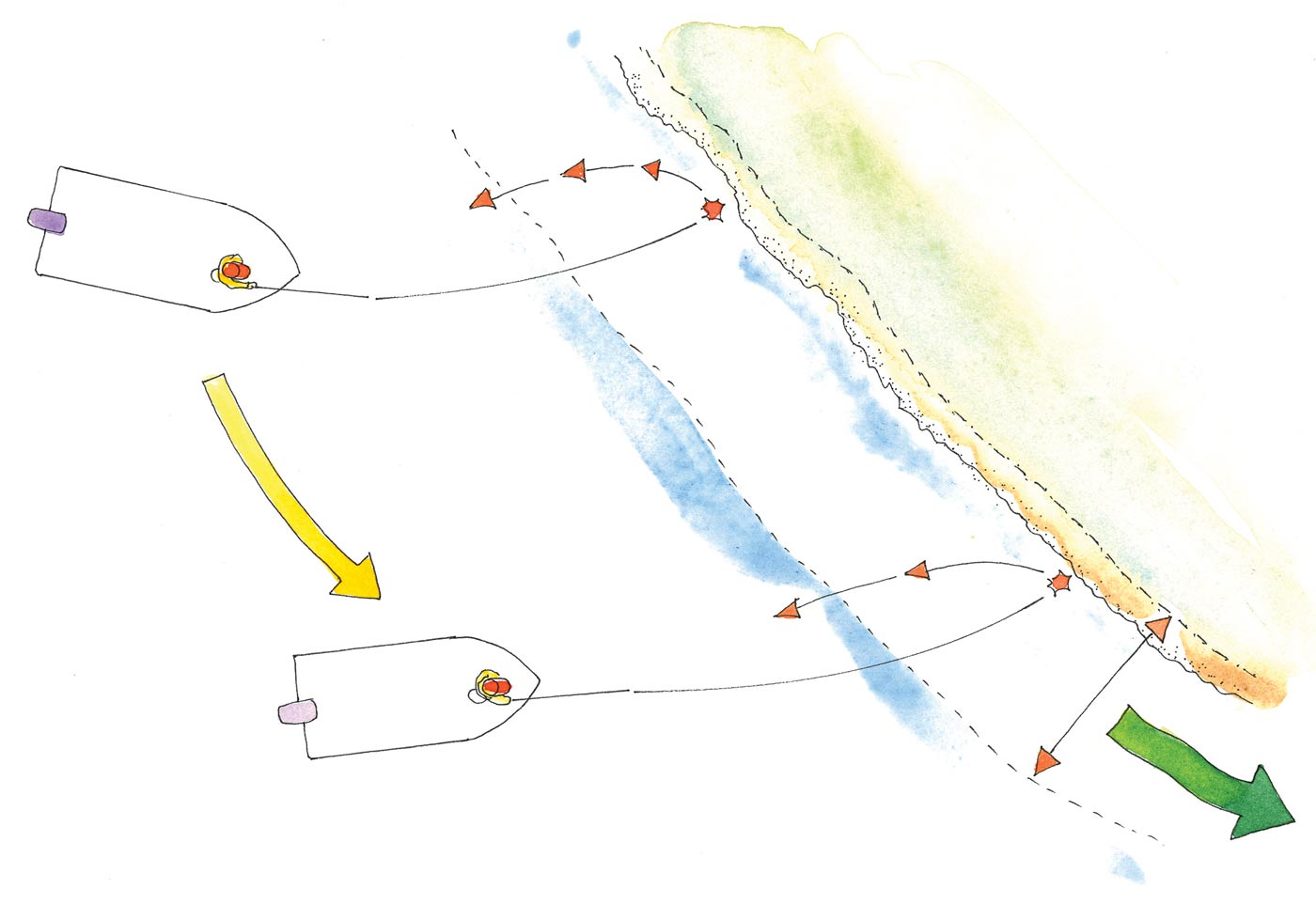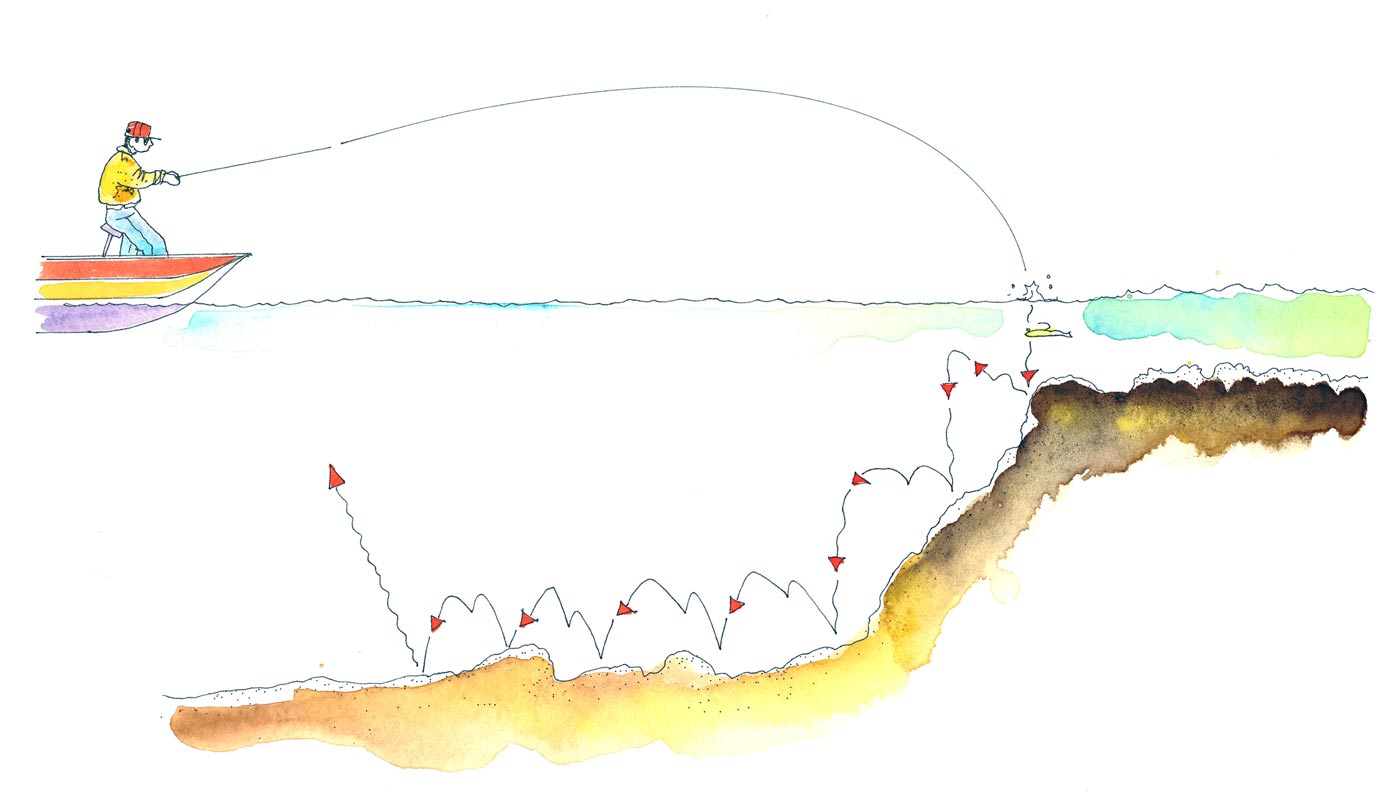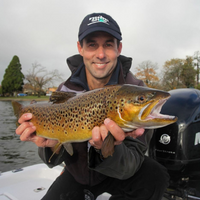Author: Nige Webster
Snapper have long been regarded as one of Australia’s favourite target species. A quintessential forage feeder, snapper have a reputation for mooching around the bottom in search of food; however, targeting snapper in shallow water will elicit an aggressive hit and run that get’s the adrenaline pumping.
Down south in the likes of Victoria’s Port Phillip Bay, the migration of snapper starts as the waters warm towards the 18 to 20 degree mark around September whereas in the likes of Brisbane’s Moreton Bay – where I do most of my shallow water snapper fishing – June to September sees numbers increase at a rate of knots. This can be attributed to cooling waters and strong shows of bait.
Regardless of which part of the country you’re fishing in, targeting shallow water snapper can be achieved through a combination of sound luring techniques and proper boat positioning.
Searching for snapper
I spend most of my time targeting shallow water fish in 2 to 6m of water, and as is the case with a lot of fishing styles and species, catching shallow water snapper begins with finding structure.
Key structure types to look out for when searching for shallow water snapper include the likes of reefs (natural and artificial), drop-offs, ledges and rock walls.
Moreton Bay contains several islands and the central and southern parts of the bay hold the largest concentration of them. These locations are largely surrounded by shallow water reef. The reef often forms extensive shallow flats before dropping into deeper bay waters. It is these fringe reef drop- offs that most often concentrate bait and predator therefore offering some great fishing opportunity.
A variety of predatory species patrol these reef edges as they make for productive feeding highways. Find similar areas in your home waters where snapper are known to roam and you’re sure to be in with a chance.
Time on the water with a good pair of polarised sunglasses will enable you to locate areas of shallow reef and the margins where shallow rock drops into deeper water.
A fishfinder is also a handy tool to have on board. This technology enables the identification of the base of the reef drop-off as well as scattered patches of reef that sit away from the visible drop-off areas. These patches of reef often hold some very good fish. Developing a good map of the reef edges and main snapper holding points is a valuable tool to have.
Fishing low-light periods of the day – when shallow water snapper are most accessible – is made easier when you have a GPS map that highlights where you should be fishing. A good sounder will also help to locate patches of bait holding near structure.
Observing current lines and calmer patches of water is important when on the water. These signify shallow waters and the point where current is often moving around the reef edges. The mixing zone between current and reef edge is the area that many predatory species such as snapper and bait prefer to hold.
Best times to chase shallow water snapper
Picking the best time to fish is an important skill to learn when chasing snapper in the shallows. Fish can be caught at any stage of the day throughout periods when current pushing around the reef edges, however, there are times when the fish activity peaks.
Low-light periods are ideal times to be fishing the reef edges. First light in the morning and the last hour of light at the end of the day often provide memorable fishing. The periods toward the start and end of the tide often produce 30-minutes or so of frenzied feeding before the slack water shuts the fishing down.
The few days either side of the full and new moon also seem to produce the best shallow water snapper fishing. Combine some of these variables and you often have some red-hot sessions to contend with.

On the drift
In my opinion, fishing reef edges is made more effective by adopting a mobile approach. As snapper and their prey continually move about in search of food and cover, it makes sense, to increase our chances of success, to keep moving also.
The mobile approach also ensures you cover a greater amount of water, which often means you’ll encounter schools that you wouldn’t have if staying idle at anchor.
Drift fishing for snapper is a relatively straightforward and effective technique and, where weather patterns enable the approach, is one that can put you onto a lot of fish.
Employing a stealth approach will go a long way to unlocking shallow water snapper as the less you spook them, the more chance you will have to convince them to eat an artificial presentation.
This style of fishing is made easier with the aid of an electric bow-mount motor as it is the perfect tool for remaining quiet while still allowing you to fish large sections of the reef.
The process for targeting fish is to identify the reef edge that appears to hold the most likely concentration of bait and predatory fish. Establish the direction the boat will drift; this is dictated by prevailing wind and current flow direction.
Position the boat so it will drift along the edge of the reef approximately a good cast length away from it. Wherever possible you want to cast to fish as far away as possible from them.

Soft plastic drifting techniques
The most popular lure choice for anglers drifting while targeting snapper is the soft plastic lure. There has been much written about snapper and soft plastics in this country because the technique is proven to be very effective. We now have access to quality soft plastic lures, jigheads, rods, reels and lines that are made for snapper anglers.
As mentioned above, try to match local bait sizes by choosing a similar sized soft plastic.
Once a drift has been initiated, a soft plastic lure can be retrieved through likely fish holding positions. One popular retrieve that is often used when drifting includes:
- Cast the lure at a 45-degree angle from the side of the boat so that the lure lands ahead of you and the direction of your drift. Ensure the lure is cast across and beyond the surmised position of holding fish
- Engage the reel and slowly retrieve slack line so that you just stay in contact with the lure (remember that you are drifting towards the lure)
- The line will noticeably slacken as the lure hits bottom and this weight loss is often detected through the rod
- Once the lure is on the bottom, lift the rod tip to slightly above horizontal, retrieve any slack line and give the rod tip a few twitches to bring it up above head height. The lure should be jigged 20 to 40cm up off the bottom
- After jigging the lure, drop the rod tip to horizontal again and retrieve any slack line
- Repeat this process while the boat is drifting until the lure is behind the stern of the boat. At this point it becomes harder to jig the lure subtly as the movement of the boat accentuates lure movements, making it look unnatural
- Retrieve the lure and start the process by casting ahead of the boat in a 45-degree angle once again.
Selecting the best jighead weight is a key part of catching fish when using this technique. If you find that the boat is quickly overtaking the position of the lure and you are continuously retrieving the lure from behind the boat then increase the weight of the jighead. The aim is to ensure that the boat and lure maintain a similar speed and position within the drift.
Many bites will occur as the lure sinks along the face of the reef edge. Bites either register as sharp taps or the rod suddenly loading up. Try to wait until you feel the weight of a fish through the rod before lifting the rod tip to set the hook.
Hooked fish will often attempt to run back into the reef. Aim to keep a smooth, consistent drag and a steady rod: you will be amazed how many fish slowly head out into deeper water. The odd fish will destroy you in monumental fashion, which for me, is all part of the fun!
Shallow water snapper tackle
Light to medium weight spin gear will satisfy much of the soft plastic requirements when fishing the shallow water for snapper.
I use a fast-tapered spinning rod with a light tip in the 6 to 7ft range in 3-5kg and 4-8kg weights paired with spinning reels in the 2500 to 4000 bracket. The fast tapered, light tip will aid in casting soft plastics long distances and to feel your way around the reef structure and subtle bites.
I recommend braided lines from 8 to 20lb (depending on your local area, the structure being fished and the size of snapper you can expect to encounter). Around Moreton Bay, I will typically use 20lb braid due to the array of other reef species on offer, such as tailor, jewfish and cod. To top it all off I recommend a 2 to 3m fluorocarbon leader in the 12 to 14lb range.
Break out box – Snapper soft plastic buyers guide
Imitating local bait is an integral part of catching fish around reef edges and there are many types of soft plastic that will do a good job of it.
Common bait sources around Moreton Bay include bay anchovies, hardyheads, small crabs, prawns and squid. Baitfish will commonly hold off reef points and steeper ledges as these areas deflect larger amounts of current. Find these areas where bait concentrates and you will be on your way to hooking quality fish.
The best tip is to find lures that you are confident using. Lures in the 3 to 7” range will imitate much of the bait we see around the country throughout the year.
There are plenty of reputable and proven soft plastics to choose from. Minnow, prawn-imitation and curl-tail styles from brands such as Z-Man, Savage, Daiwa, Zerek, Squidgie, and Berkley are all good starting points.
Experiment with bright and dull/natural colours until a specific colour starts to produce bites. Aim to use jighead weights that will get the lure to the bottom in a reasonable time. For example, if it takes so long for a lure to get to the bottom that it ends up being positioned a long way behind a drifting boat by the time it finally reaches the substrate you are fishing too light.
Shallow snapper round up
While it can be tempting to head straight for the deep water when targeting snapper, it pays to reconsider and give the shallows a run for their money, especially during low light periods.
At the start of the season in Victoria’s Port Phillip Bay and Western Port some monster reds in excess of 8kg are caught by land based and boat based anglers around structure after dark and before first light, which proves just how effective this style of fishing can be.
By adopting some of the methods and techniques above, and by gearing up with the right tackle, you’ll put yourself in with a serious shot of unlocking some impressive snapper from the shallows.


